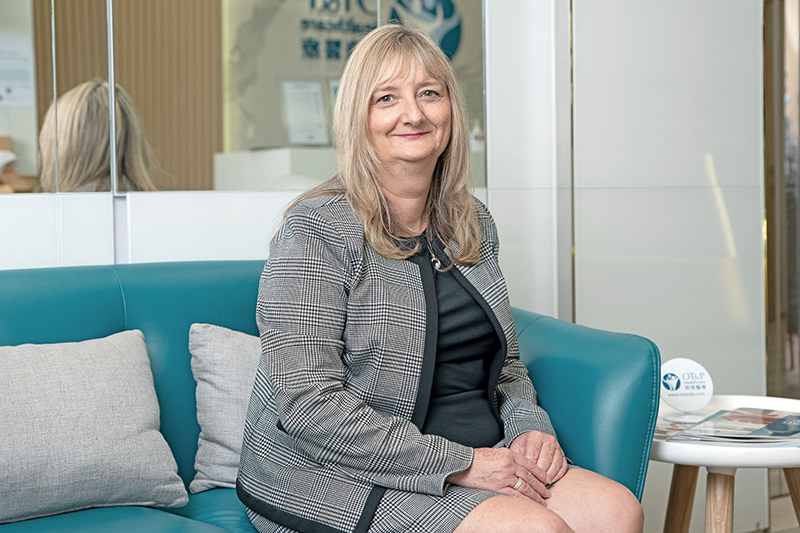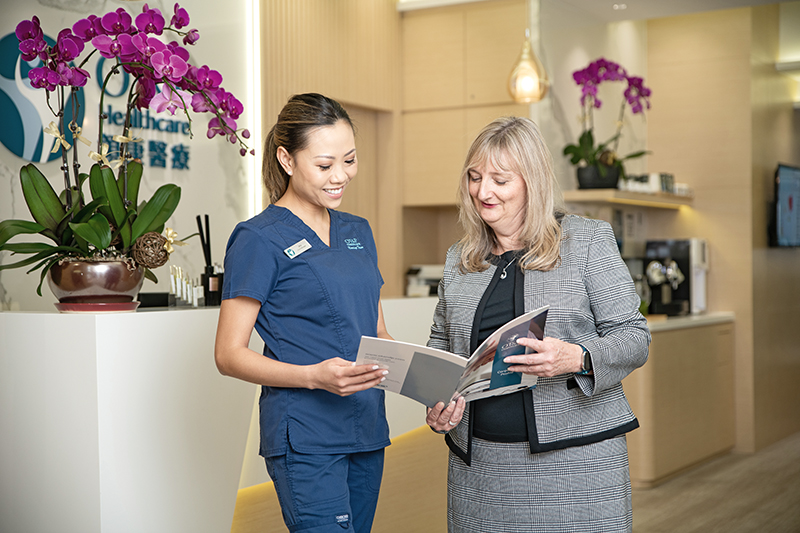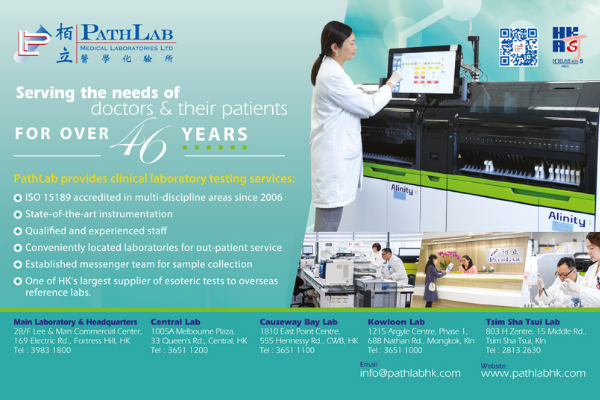Executive Director Linda Wills knew of the two founding partners of OT&P Healthcare prior to starting work with the clinic group. Dr Tim Trodd and Dr David Owens had set up their first clinic in 1994, and their reputation was well known in Hong Kong.

Linda recognised it would be a good place to work, due to the culture of the company, which was concern for patients and staff in equal measure. Although OT&P had already secured accreditation for quality management, Linda’s initial goals for the company involved attaining clinical accreditation.
This was successfully achieved in 2010, when OT&P became the first clinic group in Hong Kong to receive accreditation from the Australian Council on Healthcare Standards. Linda is currently working with the Hong Kong Department of Health (DOH) to ensure OT&P is in line with recent standards introduced by the government in 2019.
COVID-19 permitting, she hopes DOH staff will be able to visit soon to see that OT&P has achieved all the standards and can be certified. “We obviously have infection control policies, and we do risk assessments around infection control, but COVID-19 has made us focus more, with the special circumstances around social distancing and limiting close contact,” Linda says.
“We have had to look at being adaptable and how we can make changes in the clinic so that we can still see patients and ensure it’s safe for the patients and staff. “COVID-19 has been a significant disruptor for us, which has created threats, challenges and opportunities. Where possible, we are taking advantage of this disruptor to look at the technologies we can put in place to ensure safer systems of work. One example of this is that we are doing more telemedicine and putting safeguards in place to ensure it is provided where appropriate, and safely.”
None of us could do our job without the support of the other staff.
As part of OT&P’s focus on innovation, the company’s IT systems are constantly kept up to date so that processes are as streamlined as possible. OT&P has been working with laboratory and radiology partners to automate systems with the aim to improve the speed, accuracy and efficiency of results.
With one laboratory the results are uploaded direct to the clinic system, thus decreasing the risks of errors and result turnaround and eliminating need for messengers to hand-deliver results back to the clinic.
“As part of our goal of continuous improvement, we are looking at how we can better improve on patient records and communication,” Linda says. “We are always looking to maintain our quality systems and make sure everything is safe for all patients.”
It is not just technology that has proved essential in adjusting to the pandemic. Information has also been a key approach in dealing with COVID-19. Linda says OT&P has constantly kept patients, corporate clients and other stakeholders up to date through regular communications, earning the gratitude of these groups.

This kind of stakeholder engagement is crucial, given that OT&P strives to work with only the best partners and suppliers. “When we work with other companies and suppliers, we look for companies that have the same values as us, which are focused on quality customer care,” she explains.
“For instance, before we sign service agreements with laboratories and radiology, I will go and visit the laboratories or radiology centre, look at their policies and procedures, review their customer service skills and check whether they are appropriately accredited or certified.
“We want to ensure if we are sending our samples to a specific lab, we know that results are going to be as accurate as possible and that patients visiting radiology centres will receive good service.” On an internal level, Linda’s strategy goes much deeper than just communication.
“Communicating with staff and with other stakeholders is obviously very important, as well as the empathy and understanding of staff’s roles,” she says “For me personally, I have many years’ experience in managing healthcare companies and I am a registered nurse, so I do understand what is happening in the clinics.
“Due to management commitments I visit clinics less these days, but I often used to go to the clinics and visit staff and work with them and review workflows. Just recently, we had a typhoon here. I live very close to one of our clinics, so the first thing I always do after a typhoon is go and open up the General Practice clinic.
“I went in that day to work as a receptionist, dispenser and nurse, helping until staff living further afield could attend. I keep up to date and I still have my nursing licence and practising certificate, so I can work with the staff. They understand that I’m not just leading from the top down.”
This effort to be connected to OT&P’s frontline staff pays off when it comes to introducing new policies. Linda and the rest of the management team ensure they communicate the why and how of new policies to staff, and the benefits it provides for OT&P.
A successful business must work as a team, Linda asserts, and that extends to every level; otherwise, she explains, OT&P wouldn’t be able to focus on the central pillar of its business: its patients. “Customer service and teamwork are very important to us. Our staff have front-of-house training,” Linda says.
“Whether they are clinical or non-clinical, their technical and customer service skills are important core competencies. Caring for our patients is very important to us, and we couldn’t do it without our staff. All staff are critical for the delivery of safe and quality care, from doctors, to nurses, to receptionists and cleaners. It’s important for everybody to understand that none of us could do our job without the support of the other staff.”
Proudly supported by:



